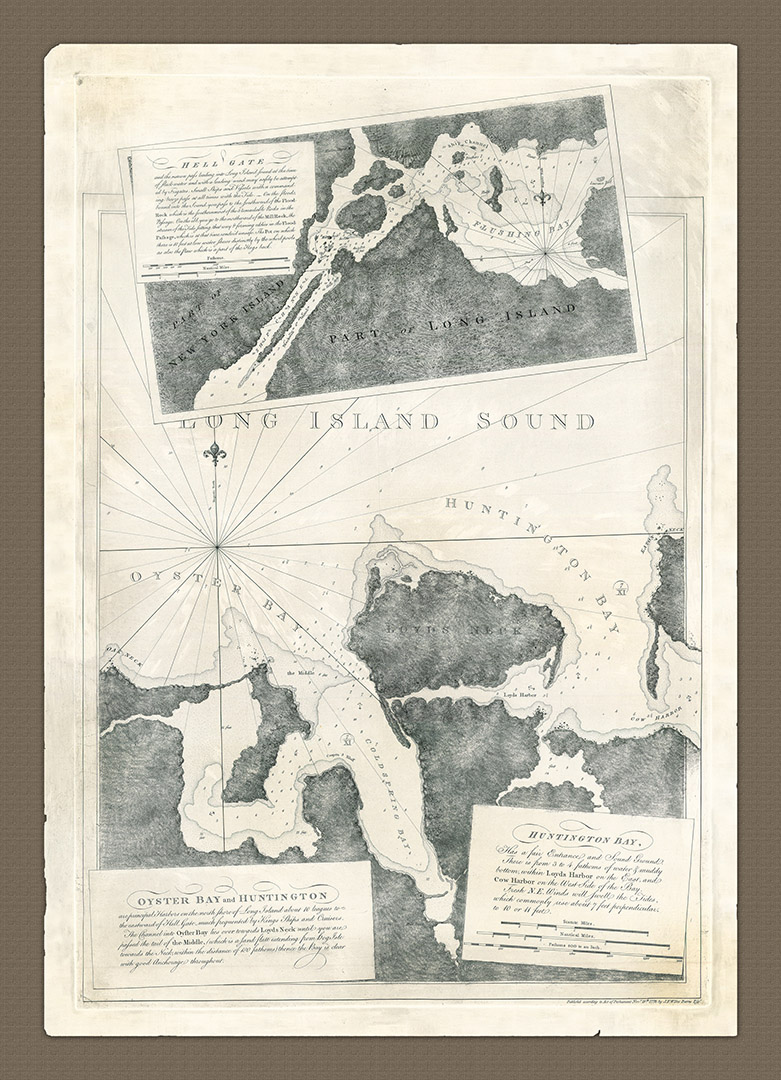The inset at the top of the charts is based upon a survey which is included here in the Heritage Charts collection (see heritage Charts A220). The main part of the chart is similarly based upon the surveys of the region which were sent back to Des Barres in London in about 1775.
Oyster and Huntington Bays overlooked the East river as it emerged into Long Island Sound, still today as important a thoroughfare for shipping as it was at the time, and as such a vital area to both the British and the Americans during the Revolutionary War.
The inset panel at the top of the chart depicts the passage through the infamous Hell's Gate channel of the East River along with nautical remarks. The edition presented here is taken from a 'pull' (print) made by the British Admiralty in about 1947 from Des Barres' original copper plates, before the plates were presented to the US government. The result of the pull was that we are presented with an authentic view of what the charts of the Atlantic Neptune would have looked like when they were originally made.
Long Island, and this area in particular, was occupied by the British in 1776 for a period of seven years. Amongst the impositions made on the local residents was a requirement to take an oath of allegiance to the British Crown or face the possibility of losing their property.
The chart shows accurate soundings and anchorage points in the harbours 'much frequented by King's ships and cruisers'. In 1782 the British army established an encampment in Huntington's Old Burying Ground, razing tombstones to clear the site. Not surprisingly, many townspeople resisted, waging guerrilla warfare until the war was over and the British finally left in 1783.
Nathan Hale landed at Huntington in 1776, coming by boat from Norwalk, Connecticut, on a spying mission for George Washington. Sent to gather information about the British forces on Long Island and in New York City, he was captured and executed by the British in New York City in September 1776. A memorial stands in Halesite, the area named in his honor by a late nineteenth century real estate developer.
This Revolutionary War chart depicts a small but important the part of Long Island Sound known as Oyster Bay which provided valuable harbours during the British occupation from 1776 through until 1782. It was produced by J.F.W. Des Barres in 1778 for his Atlantic Neptune folio.



